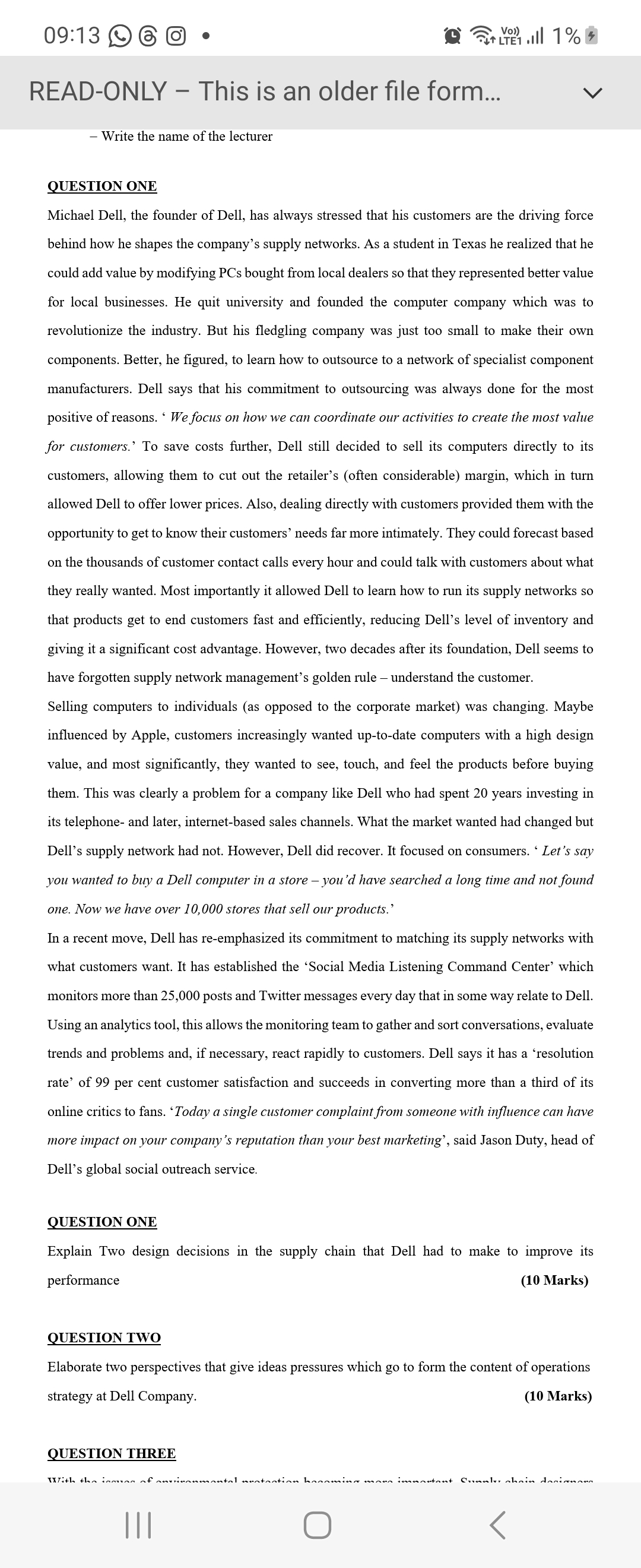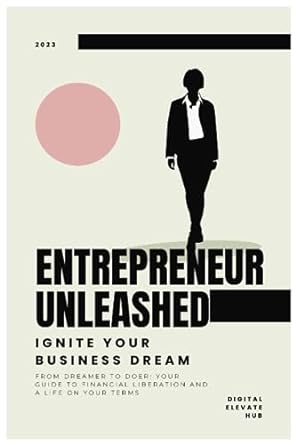 QUESTION ONE Michael Dell, the founder of Dell, has always stressed that his customers are the driving force behind how he shapes the companys supply networks. As a student in Texas he realized that he could add value by modifying PCs bought from local dealers so that they represented better value for local businesses. He quit university and founded the computer company which was to revolutionize the industry. But his fledgling company was just too small to make their own components. Better, he figured, to learn how to outsource to a network of specialist component manufacturers. Dell says that his commitment to outsourcing was always done for the most positive of reasons. We focus on how we can coordinate
QUESTION ONE Michael Dell, the founder of Dell, has always stressed that his customers are the driving force behind how he shapes the companys supply networks. As a student in Texas he realized that he could add value by modifying PCs bought from local dealers so that they represented better value for local businesses. He quit university and founded the computer company which was to revolutionize the industry. But his fledgling company was just too small to make their own components. Better, he figured, to learn how to outsource to a network of specialist component manufacturers. Dell says that his commitment to outsourcing was always done for the most positive of reasons. We focus on how we can coordinate
QUESTION ONE Michael Dell, the founder of Dell, has always stressed that his customers are the driving force behind how he shapes the company's supply networks. As a student in Texas he realized that he could add value by modifying PCs bought from local dealers so that they represented better value for local businesses. He quit university and founded the computer company which was to revolutionize the industry. But his fledgling company was just too small to make their own components. Better, he figured, to learn how to outsource to a network of specialist component manufacturers. Dell says that his commitment to outsourcing was always done for the most positive of reasons. 'We focus on how we can coordinate our activities to create the most value for customers.' To save costs further, Dell still decided to sell its computers directly to its customers, allowing them to cut out the retailer's (often considerable) margin, which in turn allowed Dell to offer lower prices. Also, dealing directly with customers provided them with the opportunity to get to know their customers' needs far more intimately. They could forecast based on the thousands of customer contact calls every hour and could talk with customers about what they really wanted. Most importantly it allowed Dell to learn how to run its supply networks so that products get to end customers fast and efficiently, reducing Dell's level of inventory and giving it a significant cost advantage. However, two decades after its foundation, Dell seems to have forgotten supply network management's golden rule - understand the customer. Selling computers to individuals (as opposed to the corporate market) was changing. Maybe influenced by Apple, customers increasingly wanted up-to-date computers with a high design value, and most significantly, they wanted to see, touch, and feel the products before buying them. This was clearly a problem for a company like Dell who had spent 20 years investing in its telephone- and later, internet-based sales channels. What the market wanted had changed but Dell's supply network had not. However, Dell did recover. It focused on consumers. 'Let's say you wanted to buy a Dell computer in a store - you'd have searched a long time and not found one. Now we have over 10,000 stores that sell our products.' In a recent move, Dell has re-emphasized its commitment to matching its supply networks with what customers want. It has established the 'Social Media Listening Command Center' which monitors more than 25,000 posts and Twitter messages every day that in some way relate to Dell. Using an analytics tool, this allows the monitoring team to gather and sort conversations, evaluate trends and problems and, if necessary, react rapidly to customers. Dell says it has a 'resolution rate' of 99 per cent customer satisfaction and succeeds in converting more than a third of its online critics to fans. 'Today a single customer complaint from someone with influence can have more impact on your company's reputation than your best marketing', said Jason Duty, head of Dell's global social outreach service. QUESTION ONE Explain Two design decisions in the supply chain that Dell had to make to improve its performance (10 Marks) QUESTION TWO Elaborate two perspectives that give ideas pressures which go to form the content of operations strategy at Dell Company. (10 Marks) QUESTION THREE
 QUESTION ONE Michael Dell, the founder of Dell, has always stressed that his customers are the driving force behind how he shapes the companys supply networks. As a student in Texas he realized that he could add value by modifying PCs bought from local dealers so that they represented better value for local businesses. He quit university and founded the computer company which was to revolutionize the industry. But his fledgling company was just too small to make their own components. Better, he figured, to learn how to outsource to a network of specialist component manufacturers. Dell says that his commitment to outsourcing was always done for the most positive of reasons. We focus on how we can coordinate
QUESTION ONE Michael Dell, the founder of Dell, has always stressed that his customers are the driving force behind how he shapes the companys supply networks. As a student in Texas he realized that he could add value by modifying PCs bought from local dealers so that they represented better value for local businesses. He quit university and founded the computer company which was to revolutionize the industry. But his fledgling company was just too small to make their own components. Better, he figured, to learn how to outsource to a network of specialist component manufacturers. Dell says that his commitment to outsourcing was always done for the most positive of reasons. We focus on how we can coordinate





